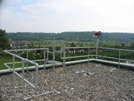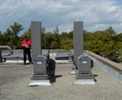
OSHA Focuses on Fall Protection Regulations
A long-awaited modernization of the general industry regulations has good elements, as well as some bad features and some omissions.
- By Thomas Kramer
- Nov 01, 2010
It's no secret that tension often exists between OSHA and employers when it comes to fall protection measures. This tension comes as no surprise, considering that compliance officers are enforcing general industry regulations that do not reflect the advancements made in fall protection industry standards, processes and equipment throughout the past 40 years. Thankfully, with the release of proposed changes to the 29 CFR 1910 general industry fall protection regulations in May, OSHA is now working to become more relevant for today's industry practices.
 Fall protection is a focus area for OSHA because it is regularly at the top of the agency's list for violations, both in number and penalties. Unfortunately, politics, special interests, other safety priorities, and myriad other issues have repeatedly derailed the updating of these regulations since their original release in 1971. While the regulations originally were intended to provide guidance for protecting workers at heights, that well-intended guidance is now largely obsolete for today's workplace. Fortunately, the industry's collective hope is that this proposed change will reverse the trend and be made into law in the near future.
Fall protection is a focus area for OSHA because it is regularly at the top of the agency's list for violations, both in number and penalties. Unfortunately, politics, special interests, other safety priorities, and myriad other issues have repeatedly derailed the updating of these regulations since their original release in 1971. While the regulations originally were intended to provide guidance for protecting workers at heights, that well-intended guidance is now largely obsolete for today's workplace. Fortunately, the industry's collective hope is that this proposed change will reverse the trend and be made into law in the near future.
Although the period for public comment on the 292-page proposed document ended in late August, OSHA will be working with a variety of industry representatives in the coming months to edit the draft rules in forums such as public hearings. If you engage with your organization's fall protection program, it is important to read and understand the proposed regulatory text (pages 29131-29153) and determine the future impacts it may have for your program.
Although this article represents a singular viewpoint on these complex issues, now is the time to engage with this information. Doing so will increase the chances that the document will provide the information needed to improve safety and reduce risk for work at height.
The proposed document contains elements that have significant potential to increase worker safety, as well as those that don't -- and even a few that were left out entirely. To help you understand the proposed changes, these items have been organized into The Good, The Bad and The Overlooked.
The Good
Three overriding concepts of the proposed regulations are extremely positive.
1. OSHA is looking to harmonize the general industry regulations with those from the construction and shipbuilding industries. Doing this will simplify fall hazard programs, especially for organizations that must comply with a combination of general industry, construction, and shipbuilding regulations.
2. Whenever possible, the regulations are being written using performance language to accommodate innovation in new technologies or processes that are not yet available. Ideally, having performance-based guidance, rather than specific requirements, will allow the regulations to be relevant longer.
3. Another positive aspect of the proposed regulations involves a new mandate for fall hazard surveys. In proposed subpart I, related to fall protection personal protective equipment, specific language requires employers to identify all fall hazards related to work tasks and locations that put workers at risk for a fall. While this has always been the case for other types of hazards where PPE is required, it is now explicitly required for fall hazards.
Although thousands of hazards may be identified during a survey, not all of those hazards pose the same risk. By identifying all hazards -- not just the most obvious ones -- employers can understand the variation in risk presented to workers. Some hazards are high risk (e.g., very frequent work performed at extreme heights), while others are much lower (fall from a ladder whose top rung is a few inches below the landing platform -- technically, a non-compliance). While both examples are fall hazards, the risk associated with them is completely different. With increasingly limited budgets, it is critical to apply available dollars to those abatements that decrease the most risk.
The Bad
It may sound odd to refer to saving lives as a "bad" outcome of the proposed regulations. But while OSHA's goal of preventing 20 worker fatalities based on the new regulations is a noble cause, it can be considered negative in that the number could be higher. According to figures reported by the Bureau of Labor Statistics, this goal represents less than 10 percent of yearly fall fatalities. OSHA does not cite reasons for selecting this number, which makes it seem both arbitrary and low.
The proposed regulations also do an injustice to fall protection systems, specifically related to anchorages. Safety systems, particularly active fall protection systems, must factor in nuances of both safety and engineering. When the regulation mentions identifying a 5,000-pound anchorage for fall protection tie-off, it does not indicate who needs to designate the anchorage. Additionally, other factors related to anchorage identification, such as swing fall, are not discussed when addressing the strength. This leads to opportunities of judgment where someone does not have sufficient background.
On the other hand, the ANSI Z359.2 standard refers to an anchorage of this nature as a non-certified anchorage that a competent person in fall protection designates. Even professional engineers are prohibited by state law from designing an anchorage without proving the existing structure is adequate to accept the loads imposed by the fall protection system. It seems irresponsible for OSHA to allow anyone to perform this function when a professional engineer trained in the analysis of structures cannot. Please remember that few professional engineers are capable of designing fall protection systems, because they are not trained in the critical nuances of fall protection design.
To further deteriorate the importance of anchorage design, the proposed regulations highlight an inconsistency in safety system requirements.
Consider this: both fall arrest systems and safety net systems are intended to support an impact force from a falling worker and prevent him or her from striking the level below. In addition, both systems are required to have components with a 5,000-pound capacity. But safety nets are significantly more redundant and are tested with a higher weight (400 pounds vs. 282 pounds). To determine the strength and overall suitability of the systems, safety net systems are subjected to a drop test or certified by the employer. On the other hand, anyone can identify that an anchorage for a fall arrest system is capable of supporting 5,000 pounds without any further documentation. It seems shortsighted to require more stringent requirements for a system that is already inherently more redundant.
The Overlooked
While the proposed regulations address a wide variety of items related to walking-working surfaces and personal fall protection equipment, some significant items have been left out of the draft rules.
First, the snaphook gate strength requirement is not addressed in the proposed regulation. Although the requirement found in ANSI Z359.1-2007 was recently referenced in an OSHA letter of interpretation, the same requirement did not make it into the proposed regulation. Please note that a more current ANSI Z359 standard (ANSI Z359.12-2009) is available for guidance on the use of snaphooks and other connectors.
Also, OSHA Standard Directive 1-1.13 (1984) is an important regulatory document that stresses use of the Hierarchy of Controls for selecting hazard abatements. In essence, STD 1-1.13 states that fixed platforms, rather than active fall protection systems, must be used when work access is frequent, regular, and predictable. Enforcing this requirement could provide significant protection to workers frequently exposed to fall hazards. Unfortunately, this concept has been left out of the proposed regulations. While PPE is an effective way to protect someone from a fall hazard, it is definitely not the safest and is not equal to engineering controls or passive fall protection.
Another item that may not be immediately obvious upon review of the proposed rules is the grandfather clause for guardrail. In the current proposed regulations, 36-inch guardrail is now specifically excluded, whereas it was previously included as a grandfather clause. Because the previous proposed document (1990) allowed 36-inch guardrail for existing installations, many organizations believed this hazard was addressed and their workers were properly protected. With the current proposed regulation, OSHA does not consider 36-inch guardrail to be as equally safe as 42-inch nominal guardrail height.
"Nominal guardrail height" means there is a lower bound of 39 inches. In this scenario, it can be inferred that a personal fall arrest system would be safer than 38-inch guardrail. Although the guardrail in this example is technically 1 inch below the compliant threshold, an active fall protection system is still more easily defeated. From a pure risk standpoint, more risk is associated with the active fall protection system.
In summary, one can make the case that the money employers will spend to make guardrails that are less than 39 inches compliant would be better spent providing fall protection at other locations.
Besides the strictly safety/risk concern, this reversal of this grandfather clause may cause organizations to resist complying with the proposed regulations or even recognized national standards such as ANSI Z359, for fear of future changes. OSHA has previously stated that compliance with a proposed document is a de minimis violation and would not carry violation or fines. Employers will be rightfully skeptical with items that OSHA may currently consider "de minimis."
As a final item of note, it is important to critically review OSHA's published cost considerations for compliance with the proposed regulation. Two aspects must be factored into a complete cost analysis for organizations looking to invest in a fall protection program: 1) costs for complying with fall protection requirements that have been established by the new regulations and 2) costs associated with bringing programs into compliance with the previous regulation requirements. It appears the cost estimations provided in the proposed document account only for items that fall under the first factor. For example, in table V-29, the average cost per establishment for the motor vehicle manufacturing industry (NAICS code 3361) is $363.44. Anyone who has worked in the safety aspects of this industry knows this cost will not even cover item 1 above, let alone item 2. Please be aware of these items when budgeting for implementation of these regulation changes.
Conclusion
OSHA has a significant challenge ahead to reconcile comments from a variety of parties with a variety of motivations. There is significant momentum to ensure this proposed rule becomes law, so it is important for you to know what changes may result from this proposed rule and how they will uniquely affect your fall protection program. Just reading the information is not enough; now is the time to develop an action plan that can assist your organization in the implementation of this proposed regulation.
This article originally appeared in the November 2010 issue of Occupational Health & Safety.